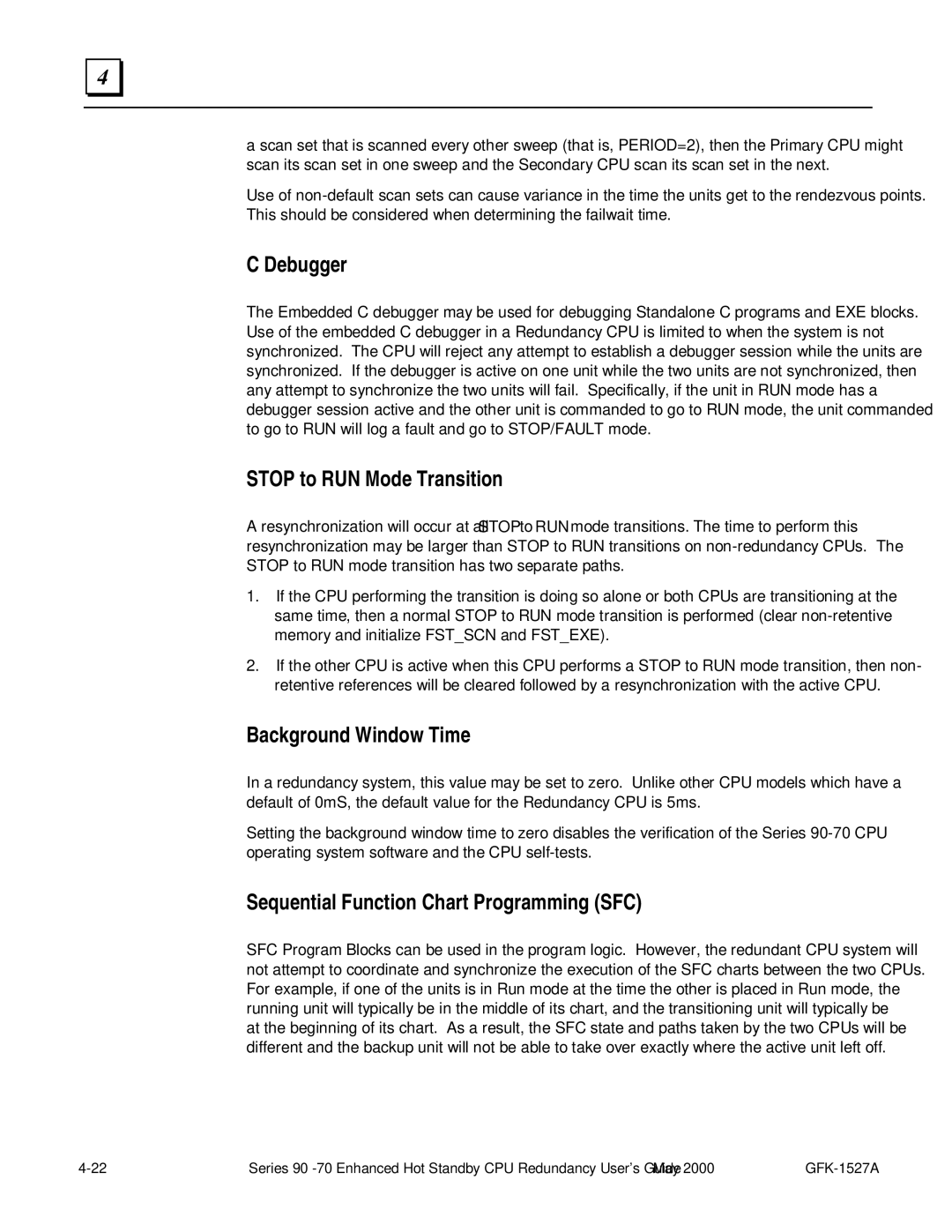4 |
a scan set that is scanned every other sweep (that is, PERIOD=2), then the Primary CPU might scan its scan set in one sweep and the Secondary CPU scan its scan set in the next.
Use of
C Debugger
The Embedded C debugger may be used for debugging Standalone C programs and EXE blocks. Use of the embedded C debugger in a Redundancy CPU is limited to when the system is not synchronized. The CPU will reject any attempt to establish a debugger session while the units are synchronized. If the debugger is active on one unit while the two units are not synchronized, then any attempt to synchronize the two units will fail. Specifically, if the unit in RUN mode has a debugger session active and the other unit is commanded to go to RUN mode, the unit commanded to go to RUN will log a fault and go to STOP/FAULT mode.
STOP to RUN Mode Transition
A resynchronization will occur at all STOP to RUN mode transitions. The time to perform this resynchronization may be larger than STOP to RUN transitions on
1.If the CPU performing the transition is doing so alone or both CPUs are transitioning at the same time, then a normal STOP to RUN mode transition is performed (clear
2.If the other CPU is active when this CPU performs a STOP to RUN mode transition, then non- retentive references will be cleared followed by a resynchronization with the active CPU.
Background Window Time
In a redundancy system, this value may be set to zero. Unlike other CPU models which have a default of 0mS, the default value for the Redundancy CPU is 5ms.
Setting the background window time to zero disables the verification of the Series
Sequential Function Chart Programming (SFC)
SFC Program Blocks can be used in the program logic. However, the redundant CPU system will not attempt to coordinate and synchronize the execution of the SFC charts between the two CPUs. For example, if one of the units is in Run mode at the time the other is placed in Run mode, the running unit will typically be in the middle of its chart, and the transitioning unit will typically be at the beginning of its chart. As a result, the SFC state and paths taken by the two CPUs will be different and the backup unit will not be able to take over exactly where the active unit left off.
Series |
